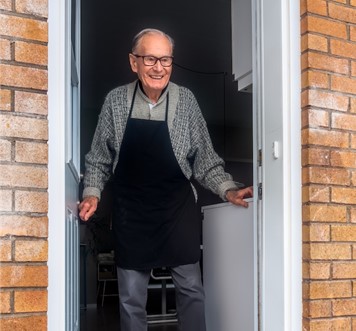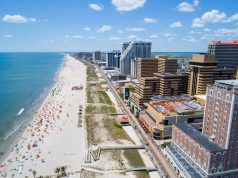Jonathan Portney is a Public Health Services Director and Medical Health Operations Area Coordinator. In the following article, Jonathan Portney embarks on a fascinating journey to explore and understand Blue Zones, uncovering the integral health lessons they offer to the rest of the world. From their unique cultural practices and lifestyle choices to their emphasis on community and nourishing diets, these longevity hotspots hold valuable insights that can inspire and transform our own approach to health and wellness.
Icaria, Greece. Ogliastra, Sardinia, Italy. Okinawa, Japan. Loma Linda, California. Nicoya Peninsula, Costa Rica. What do these five places have in common? Longevity, health, wellness, – best known as Blue Zones.
Blue Zones, while not a scientific term, is the name used to describe geographic locations where a high percentage of residents live over 100 years — centenarians abound in these regions. First coined by Dan Buettner, an author studying parts of the globe in which people live incredibly long and happy lives, Blue Zones are now studied to unlock health and longevity secrets.
Jonathan Portney says that Buettner’s most notable book, aptly called The Blue Zones, dives into each location, analyzing how the oldest people in the world have lived (and continue living) their healthiest lives.
Jonathan Portney Explains the Blue Zone Concept
The Blue Zone concept expanded on the demographic work conducted by Michel Poulain and Gianni Pes who identified Sardinia as the region with the highest concentration of males above 100 years old.
Jonathan Portney explains that Poulain and Pes drew blue circles on the map, showcasing the villages boasting the highest longevity. It was these markings that dubbed the infamous “blue zone”.
But Buettner took the idea steps further, pinpointing other longevity hotspots, until trademarking the term.
But it isn’t just about living longer; people residing in these locations also tend to:
- Be happier.
- Be completely engaged with family and their communities.
- Have lower rates of mental health issues.
- Have lower rates of chronic diseases.
Essentially, Blue Zones represents the lifestyle and environment of the world’s centenarians.
Integral Health Lessons
The work conducted by Buettner and his team led to crafting the Power 9, a set of shared lifestyle habits upheld within these zones. Jonathan Portney says that it seems there’s a lot to learn from the globe’s longest-living people, the crux of which is rooted in these nine health lessons:
• Moving Naturally
Jonathan Portney explains that most won’t be surprised by the first lesson — exercise. However, Blue Zone inhabitants won’t be pumping iron, running marathons, or training for a triathlon. Instead, they move consistently throughout the day through walking, doing housework, and gardening – enjoying time outdoors. Their environments encourage movement without thought.
• Finding Purpose
Those who know why they get out of bed every morning are happier. And, as Blue Zone residents show, they live much longer than the average human in the modern world, explains Jonathan Portney.
Finding purpose may be the hardest thing to do, but individuals should pursue anything that makes them feel excited. It doesn’t have to be grandiose, just something that’s personally meaningful.
• Shifting Down a Gear in Response to Stress
Every person experiences stress, from all walks of life and locations. Excessive exposure to stress can cause inflammation, leading to age-related diseases and decreased mental health.
Jonathan Portney indicates that centenarians appeared to have cracked the stress code; they develop routines that relieve that stress. From spending time in their communities to praying to participating in happy hour, those living in these “longevity zones” spend time de-stressing every single day.
• Eating to 80% Fullness
People in Okinawa conduct “hara hachi bu”, the practice of eating until they’re 80% full. The extra 20% can be the difference between gaining and losing weight.
Jonathan Portney reports that those in Blue Zones also eat their smallest meal in the early evening, assuring their food is digested before sleep.
 • Focusing on Plant-Based Foods
• Focusing on Plant-Based Foods
Centenarian diets lean on fava beans, soybeans, lentils, and other plant-based foods, with meat consumed just five times a month.
• Drinking Wine Moderately
It’s commonly found that those in these areas drink one to two glasses of nutrient-rich red wine every day with food or friends, outliving non-drinkers.
• Putting Families First
Blue Zoners are more likely to keep aging relatives nearby, and they commit to life partners, adding three years of longevity. Plus, they regularly spend time with their children.
• Belonging to Groups
Jonathan Portney says that most centenarians belong to faith-based communities. According to Blue Zones LLC., going to faith-based services four times a month increases life expectancy by upwards of 14 years.
• Being in The Right Tribe
Social circles matter. The world’s longest lived individuals were born into or chose friends that supported healthy outlooks and behaviors.
Therein lies the Blue Zone lifestyle — and people’s tickets to 100+ years of happy, healthy lives.



 • Focusing on Plant-Based Foods
• Focusing on Plant-Based Foods


